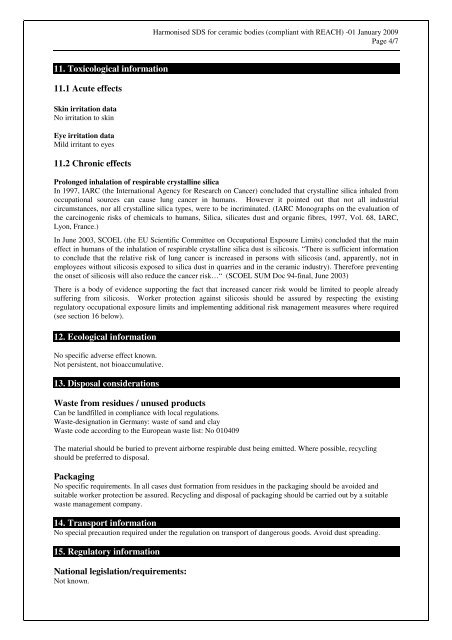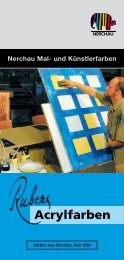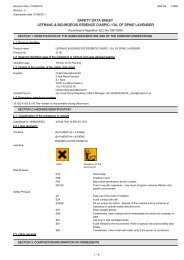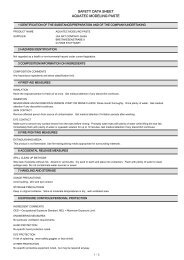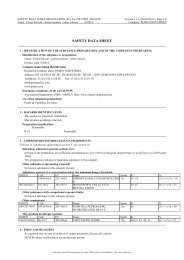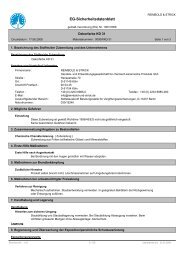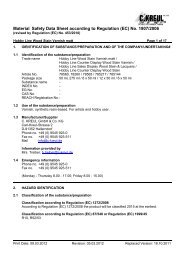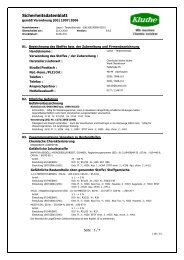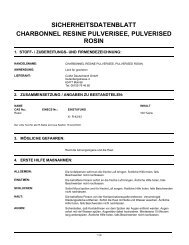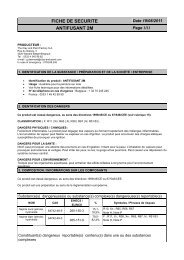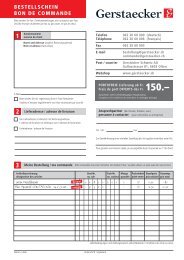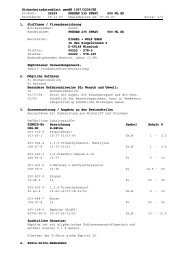Arno Witgert, Inh. Dipl.-Ing. (FH) Michael Liebig e. K. - Gerstaecker
Arno Witgert, Inh. Dipl.-Ing. (FH) Michael Liebig e. K. - Gerstaecker
Arno Witgert, Inh. Dipl.-Ing. (FH) Michael Liebig e. K. - Gerstaecker
Create successful ePaper yourself
Turn your PDF publications into a flip-book with our unique Google optimized e-Paper software.
Harmonised SDS for ceramic bodies (compliant with REACH) -01 January 2009<br />
Page 4/7<br />
11. Toxicological information<br />
11.1 Acute effects<br />
Skin irritation data<br />
No irritation to skin<br />
Eye irritation data<br />
Mild irritant to eyes<br />
11.2 Chronic effects<br />
Prolonged inhalation of respirable crystalline silica<br />
In 1997, IARC (the International Agency for Research on Cancer) concluded that crystalline silica inhaled from<br />
occupational sources can cause lung cancer in humans. However it pointed out that not all industrial<br />
circumstances, nor all crystalline silica types, were to be incriminated. (IARC Monographs on the evaluation of<br />
the carcinogenic risks of chemicals to humans, Silica, silicates dust and organic fibres, 1997, Vol. 68, IARC,<br />
Lyon, France.)<br />
In June 2003, SCOEL (the EU Scientific Committee on Occupational Exposure Limits) concluded that the main<br />
effect in humans of the inhalation of respirable crystalline silica dust is silicosis. “There is sufficient information<br />
to conclude that the relative risk of lung cancer is increased in persons with silicosis (and, apparently, not in<br />
employees without silicosis exposed to silica dust in quarries and in the ceramic industry). Therefore preventing<br />
the onset of silicosis will also reduce the cancer risk…“ (SCOEL SUM Doc 94-final, June 2003)<br />
There is a body of evidence supporting the fact that increased cancer risk would be limited to people already<br />
suffering from silicosis. Worker protection against silicosis should be assured by respecting the existing<br />
regulatory occupational exposure limits and implementing additional risk management measures where required<br />
(see section 16 below).<br />
12. Ecological information<br />
No specific adverse effect known.<br />
Not persistent, not bioaccumulative.<br />
13. Disposal considerations<br />
Waste from residues / unused products<br />
Can be landfilled in compliance with local regulations.<br />
Waste-designation in Germany: waste of sand and clay<br />
Waste code according to the European waste list: No 010409<br />
The material should be buried to prevent airborne respirable dust being emitted. Where possible, recycling<br />
should be preferred to disposal.<br />
Packaging<br />
No specific requirements. In all cases dust formation from residues in the packaging should be avoided and<br />
suitable worker protection be assured. Recycling and disposal of packaging should be carried out by a suitable<br />
waste management company.<br />
14. Transport information<br />
No special precaution required under the regulation on transport of dangerous goods. Avoid dust spreading.<br />
15. Regulatory information<br />
National legislation/requirements:<br />
Not known.


